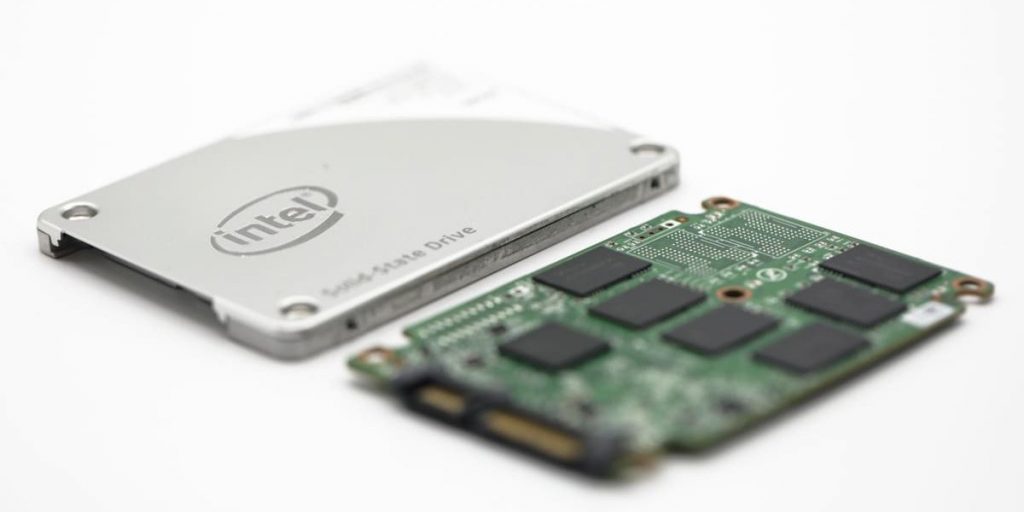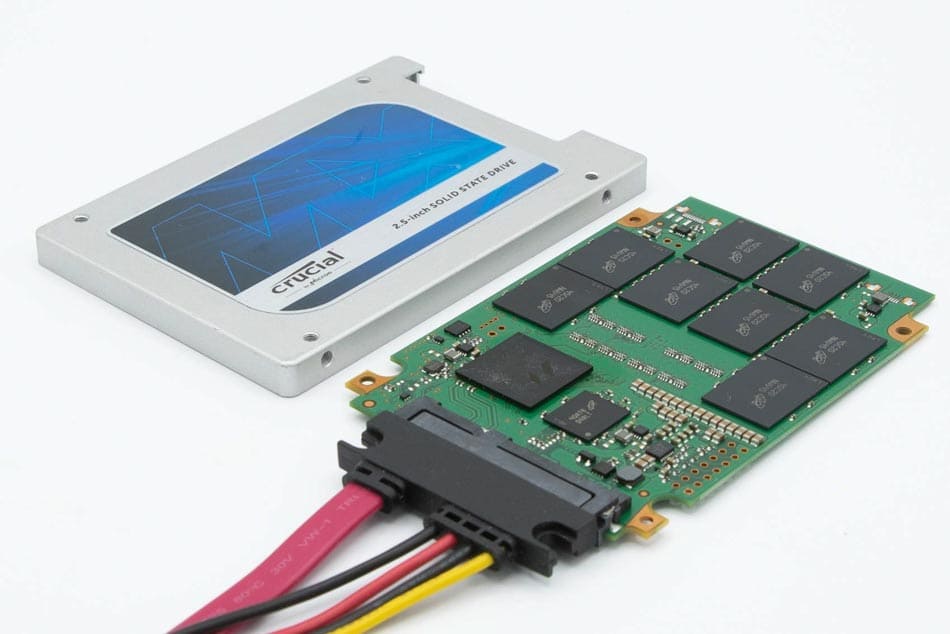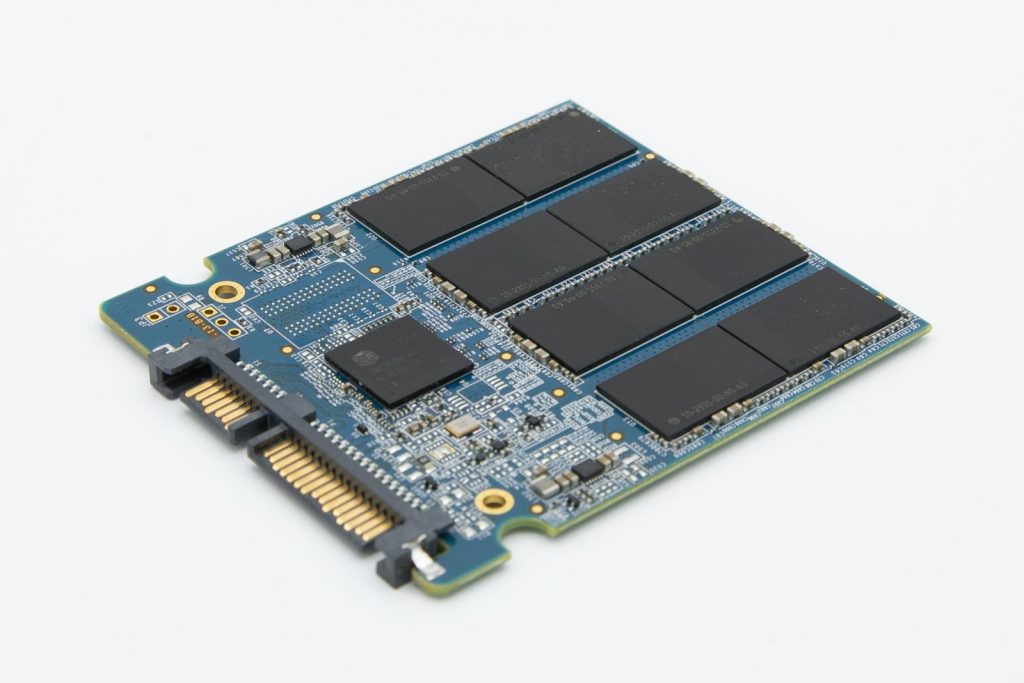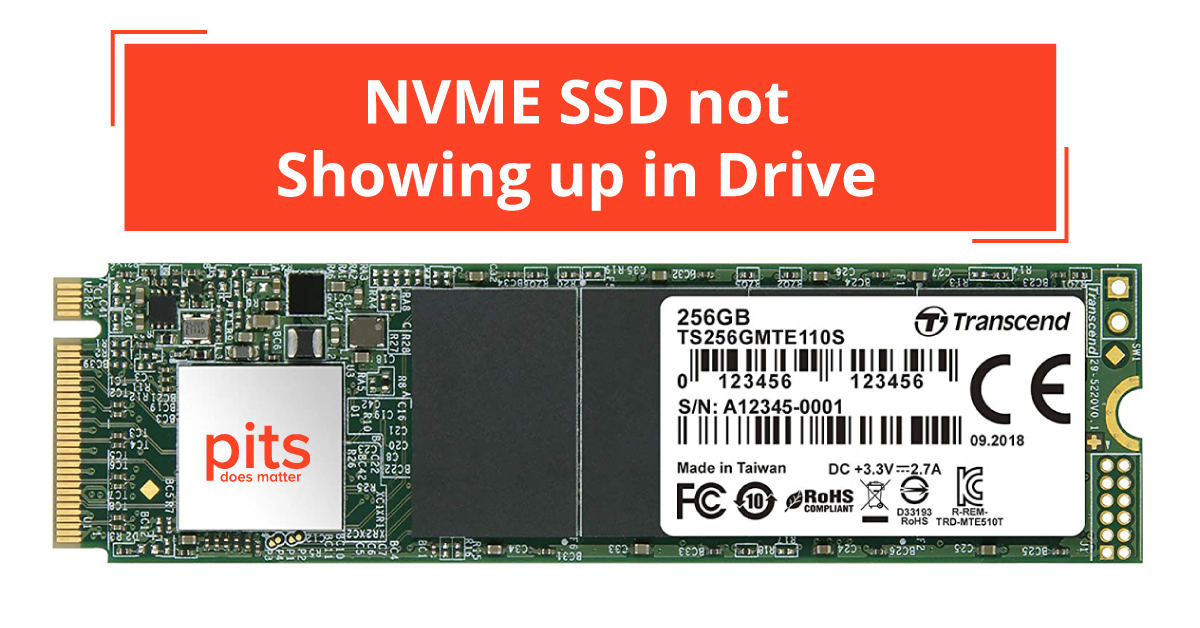NVME SSD not showing up on the drive is a common issue many users face. NVME, short for Non-Volatile Memory Express, refers to a SSD known for its exceptional data transfer speeds. These drives are gaining popularity as they offer superior performance, reliability, and efficiency. However, despite their numerous benefits, some users may encounter the issue of an NVME drive not appearing on the disk.
If you’re encountering this problem, various factors may contribute to it. In this blog post, we’ll explore potential causes and solutions for the issue of an NVME drive not appearing on the disk.
What is a NVME SSD?
What is an NVME SSD? An NVME SSD, or Non-Volatile Memory Express Solid State Drive, is a hard drive that uses flash-based memory to store data. This technology is much faster than traditional hard drives as it connects directly to the computer’s PCIe interface, permitting more rapid data transfer rates.
NVME SSDs have a significant edge over conventional hard drives due to lower latency, higher input/output operations per second (IOPS), and decreased power consumption. This makes NVME SSDs ideal for high-performance computing tasks, video editing, and gaming, where speed is critical.

NVME SSDs are storage devices that use the Non-Volatile Memory Express interface to convey the computer’s motherboard. NAND flash memory is utilized, providing substantially faster data transfer rates than conventional hard drives. With their increasing popularity, many manufacturers now produce NVME SSDs in various storage capacities to cater to diverse user needs. Some popular NVME SSD brands include Samsung, Western Digital, Crucial, and Corsair.
Possible Causes of NVME Drive Not Showing up
Various factors can lead to the problem of an NVME drive not showing up on a drive visible on the disk. When considering multiple factors, it is important to consider compatibility issues with hardware, potential driver complications, conflicts with the operating system, or the possibility of a defective SSD. Let us delve deeper into these possible causes for a more comprehensive analysis.
Hardware Compatibility Issues
If an NVME drive is not recognized, it may be due to hardware compatibility problems. This issue can happen due to various factors, such as faulty cables, outdated firmware, or incorrect BIOS settings. Users should verify if their computer’s motherboard supports NVME SSDs and has the required PCIe slots for connection. Confirming that all hardware components are compatible and operating properly is also crucial.
Driver Problems
Driver issues may cause the inability to detect an NVME SSD on the disk. These drivers serve as a crucial connection between the operating system and the computer’s hardware. Outdated drivers can lead to the computer failing to recognize the NVME SSD or other related issues. Keeping drivers updated and installing the latest versions is crucial for optimal performance.

Operating System Conflicts
Sometimes, an operating system issue can cause the disk to fail to detect an NVME drive. This situation can arise when the computer’s BIOS settings are not properly configured for NVME SSDs or if there are corrupted system files. Moreover, using incompatible operating systems or outdated firmware can also contribute to this problem.
It is important for users to ensure that their operating system is compatible with NVME SSDs and to install any necessary updates.
Faulty SSD
A faulty NVME SSD is likely the cause if the solutions mentioned are ineffective. In such cases, users should contact the manufacturer for technical support and consider replacing the drive.
BIOS Settings
The issue of an NVME SSD not showing up in BIOS is another common problem users face. The BIOS, or Basic Input Output System, initiates and manages your computer’s hardware components. If your NVME SSD is not showing up in BIOS, it could be due to incorrect BIOS settings or outdated firmware. Properly configuring the BIOS to support NVME drives is essential and should be noticed. Furthermore, updating your BIOS to the latest version may resolve the issue of the SSD NVME not showing up in the BIOS. Consulting the motherboard’s manual or the manufacturer’s website is recommended for detailed instructions on updating BIOS and adjusting settings to recognize NVME SSDs.
NVMe is not Showing up in Windows
The inability to detect an NVME SSD in Windows is another common issue users encounter. If you’re facing the problem of NVME not appearing on Windows 11/10, here are a few extra solutions that could potentially assist you:
Update to the latest version of Windows
Ensure your operating system is updated to the newest version available.
Check Disk Management
Access Disk Management in Windows and verify if your NVME SSD is present. You may need to assign or format a drive letter for proper detection and functionality if the drive appears.

Use Device Manager
Access the Device Manager and look for any yellow exclamation marks adjacent to your NVME SSD. If you find any, right-click on the device and choose “Update driver” to install the most recent version.
Check BIOS settings
Confirm that the BIOS settings are configured correctly to support NVME SSDs.
Reinstall the NVME driver
If none of the above solutions works, try reinstalling the driver for your NVME SSD. The latest driver can be obtained by visiting the manufacturer’s official website.
Seek technical support
If all else fails, contacting technical support may be necessary.
In conclusion, an NVME SSD not appearing on a disk can be caused by several factors. If the problem persists, seeking technical support or considering a replacement may be necessary. Experiencing an NVME Drive Not Showing Up In the Drive can potentially result in data loss. When faced with this circumstance, seeking reliable and professional recovery services to salvage your valuable data is crucial. Trusting PITS Global Data Recovery Services with your data recovery needs greatly enhances your chances of successfully retrieving your lost data, minimizing the impact of any NVME SSD issues you might be experiencing.
Contact PITS Global Data Recovery Services today if you’re facing data loss due to an NVME SSD not showing up. In moments when time is of the essence, PITS Global Data Recovery Services is here to support you with our 24/7 emergency service.
Frequently Asked Questions
Why is my NVME SSD drive not showing up?
When an NVME SSD doesn’t appear on a disk, there could be various reasons behind it. These include hardware compatibility issues, driver problems, conflicts with the operating system, or a faulty SSD. Identifying the specific cause is crucial to troubleshoot and resolve the issue effectively.
What should I do if my NVME SSD is not recognized in BIOS?
If the NVME SSD does not appear in the BIOS, properly configure the required settings and update your BIOS. If the problem continues, try reinstalling the NVME driver or reaching out for technical assistance.
How can I avoid NVME SSD issues?
To avoid problems with your NVME SSD, ensure that your hardware components are compatible and working correctly. Keep drivers and firmware up to date, and configure BIOS settings correctly for NVME drives. It’s also a good idea to regularly back up important data in case of unexpected failures. If you experience any issues, seek professional help from data recovery experts.
How do you set up NVMe SSD in BIOS?
Configuring an NVME SSD in BIOS can vary based on the motherboard and BIOS version employed, necessitating attention to detail and familiarity with the specific hardware specifications. For configuring BIOS settings for NVME drives, it is advisable to consult the motherboard’s manual or visit the manufacturer’s website. These resources provide detailed instructions to ensure accurate configuration.
